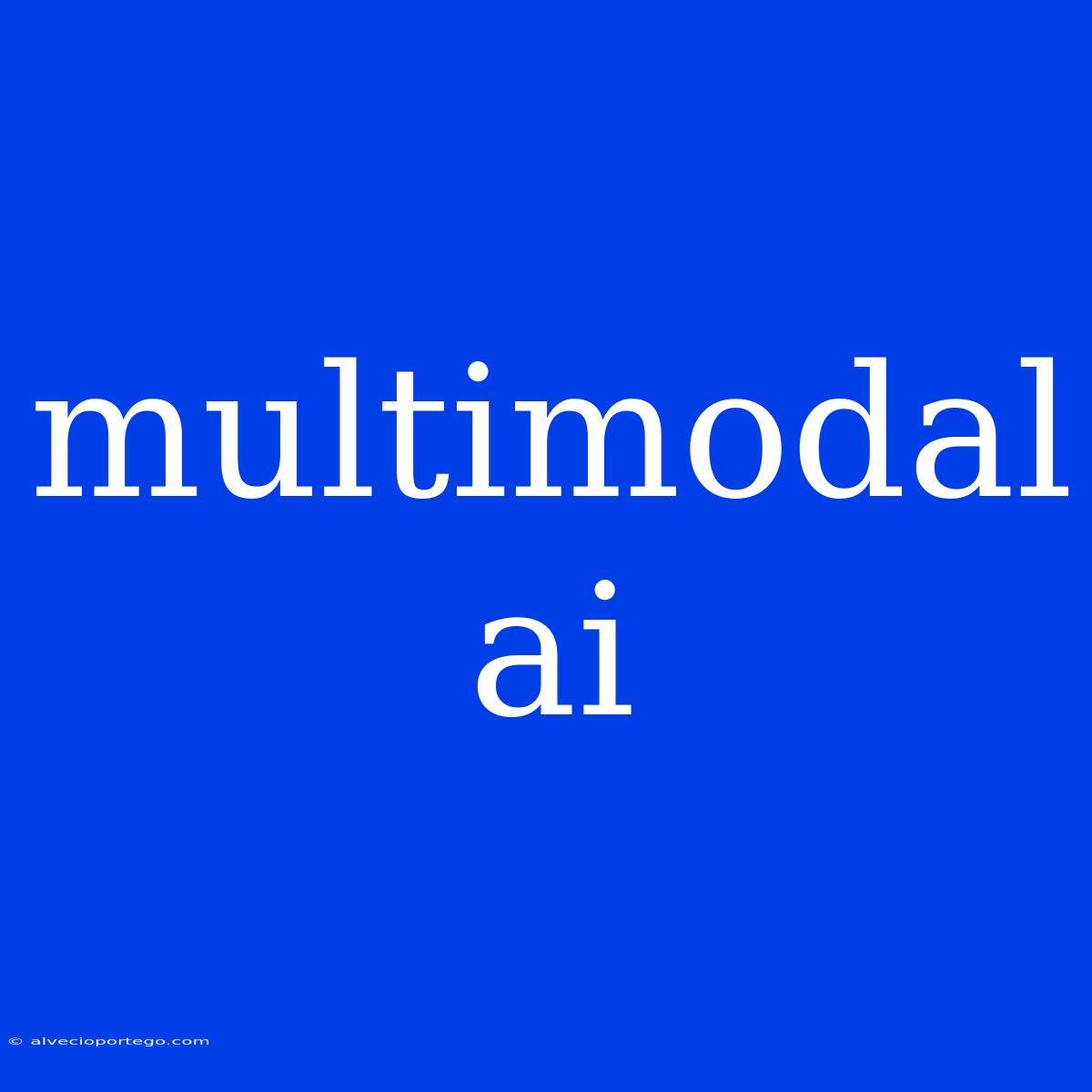Multimodal AI: The Future of Intelligence
Multimodal AI is a rapidly developing field that aims to equip artificial intelligence (AI) with the ability to understand and process information from multiple sources simultaneously. Unlike traditional AI models that typically focus on a single data modality (like text or images), multimodal AI systems can ingest and interpret data from various sources, such as:
- Text: Natural language processing (NLP) for understanding written and spoken language.
- Images: Computer vision for recognizing and interpreting visual information.
- Audio: Speech recognition and audio analysis for understanding sound and speech.
- Video: Combining computer vision and speech recognition to analyze video content.
- Sensor Data: Data from various sensors like temperature, pressure, and motion.
This multi-modal approach enables AI to gain a more comprehensive understanding of the world and tackle complex tasks that were previously impossible for single-modality AI systems.
Benefits of Multimodal AI
- Enhanced Accuracy: By integrating information from multiple sources, multimodal AI models can achieve higher accuracy in tasks like object recognition, sentiment analysis, and natural language understanding.
- Improved Contextual Understanding: The ability to analyze data from multiple sources allows multimodal AI systems to grasp the context surrounding information, leading to more accurate and nuanced interpretations.
- Increased Robustness: By combining information from diverse modalities, multimodal AI models become more resilient to errors or biases that might exist in individual data sources.
- New Applications: Multimodal AI opens doors for groundbreaking applications in various fields, including:
- Healthcare: Diagnosing diseases based on medical images, voice recordings, and patient records.
- Education: Creating personalized learning experiences based on student interactions and performance.
- Retail: Understanding customer behavior and preferences through facial expressions, voice tone, and purchase history.
- Autonomous Vehicles: Combining camera data, radar information, and GPS signals for safe and efficient navigation.
Challenges in Multimodal AI
- Data Fusion: Integrating data from different sources poses significant challenges, as each modality has unique characteristics and requires specific processing techniques.
- Model Complexity: Building and training multimodal AI models require advanced techniques and computing power due to the increased complexity involved in handling diverse data types.
- Ethical Concerns: As multimodal AI systems become more sophisticated, ethical considerations regarding privacy, bias, and potential misuse need careful consideration.
Future of Multimodal AI
Multimodal AI holds immense potential to revolutionize various industries and aspects of human life. As research and development continue, we can expect:
- Advanced Reasoning Capabilities: Multimodal AI systems capable of reasoning and drawing inferences from information across different modalities.
- Enhanced Human-Computer Interaction: More natural and intuitive interactions between humans and AI systems through multimodal communication.
- New Applications in Diverse Fields: Multimodal AI will continue to drive innovation in healthcare, education, entertainment, and many other domains.
Multimodal AI is shaping the future of artificial intelligence. As technology advances, we can expect to see even more powerful and impactful applications of this exciting field.

